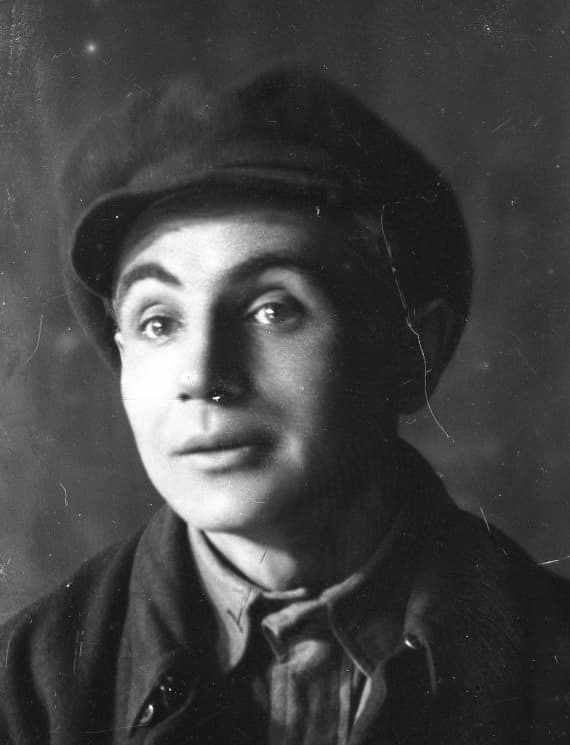The theaters at the Medvezhyegorsk and Solovetsky Islands prison camps were the last places of Les Kurbas’s creative expression. The Solovki special camp (SLON in Russian – Solovki Camp of Special Significance) set up in 1923, along with other camps and theaters in them, was under the control of the Chief Directorate of Corrective Labor Camps (GULAG).
The theater at Solovki prison was organized in September 1923 by provincial actor Serhii (Ivan Andriiovych) Armanov and actor H. I. Nikitin (pseudonym Vecherin), prisoners V. Liubokhonskyi, Stankevych, Nikitina, Osinovskyi, and Shuman. They rehearsed after a tiring 12-hour day of forced labor and performed at the Assumption Cathedral, which had a stage in the sacristy and benches for some 250 spectators. The group put on some ten shows in the first year.
Theatrical activities at Solovki were suspended in 1926-27 due to the typhus and cholera epidemics. In 1928 Ya. Shneierson directed the productions. In the following years the key figure in the theater camp was former actor of the Moscow Chamber Theater Boris Glubokovsky. Under this direction premiers were held of Sergey Naydyonov’s play Vanyushin’s Children and Mikhail Lermontov’s Masquerade.
When the camps were reorganized in late 1929 most of the Solovki troupe headed by Glubokovsky moved to the town of Kem, where the SLON administration was located. In 1935-37 the director of the Solovki theater was singer Leonid Pryvalov and the dance group was headed by Georgian King Andronnikov. In addition to plays, this theater group, which included many professional artists, also put on classical music concerts. In 1939 the activities of the Solovki theater ceased when the NKVD camp was turned into a naval base.
The official name of the theater in Medvezhyegorsk was the Central Theater of the White Sea-Baltic Canal. It was opened in 1932 in a newly built two-story wooden building that could fit 300 spectators. This building, located about half a kilometer from the camp, had a well-equipped stage, orchestra pit, foyer, and dressing rooms. A large part of the former Solovki troupe moved here from Kem. Starting in late 1932, the theater brigade, which was based in Medvezhyegorsk and included criminals, was headed by avant-garde director Igor Terentiev. It was with them in 1933 that Teretiev staged Disorderly House about the life of crime.
Les Kurbas was the chief director (under the direction of David Person) of the Medvezhyegorsk theater from November 1934 to mid-1935. He corresponded with playwright Lev Slavin while working hard on his play The Intervention. However, on the eve of the dress rehearsal, Kurbas was removed from the position of chief director and the show didn’t take place. “How do you explain my unexpected transfer to the 4th department and a camp?” the director asked in despair.
Kurbas arrived at the Solovki camp, which had a drama group of civilians and propaganda brigade of prisoners, no later than October 1935. Amateurs and professionals came together under his leadership. The group included Berezil actor Fedir Hladkov, Moscow Art Theater actor Valentyn Tsyshevskyi, actor A. Palamarchuk, director Dmytro Rovynskyi, singer Leonid Privalov, and playwright Myroslav Irchan.
At the Solovki theater Kurbas staged M. Pohodin’s Aristocrats. The actors included Rostyslav Haliat-Valaiev, Valentyn Tsishevskyi, Dmytro Rovynskyi, and others. Next was A. Sukhovo-Kobylin’s Krechinsky’s Wedding, L. Slavin’s The Intervention, V. Gusev’s Glory, George Bernard Shaw’s The Devil’s Disciple, and Pierre Beaumarchais’s The Marriage of Figaro. Kurbas also prepared propaganda concert programs, and together with Myroslav Irchan and a Czech named Urbanek created the revue Dreaming on Vian Bay.
Kurbas spent his last days on earth in a cell in the Solovki monastery. He and hundreds of other prisoners were transferred from the island to the Sandarmokh forest in Karelia, the site of a mass execution in November 1937.


